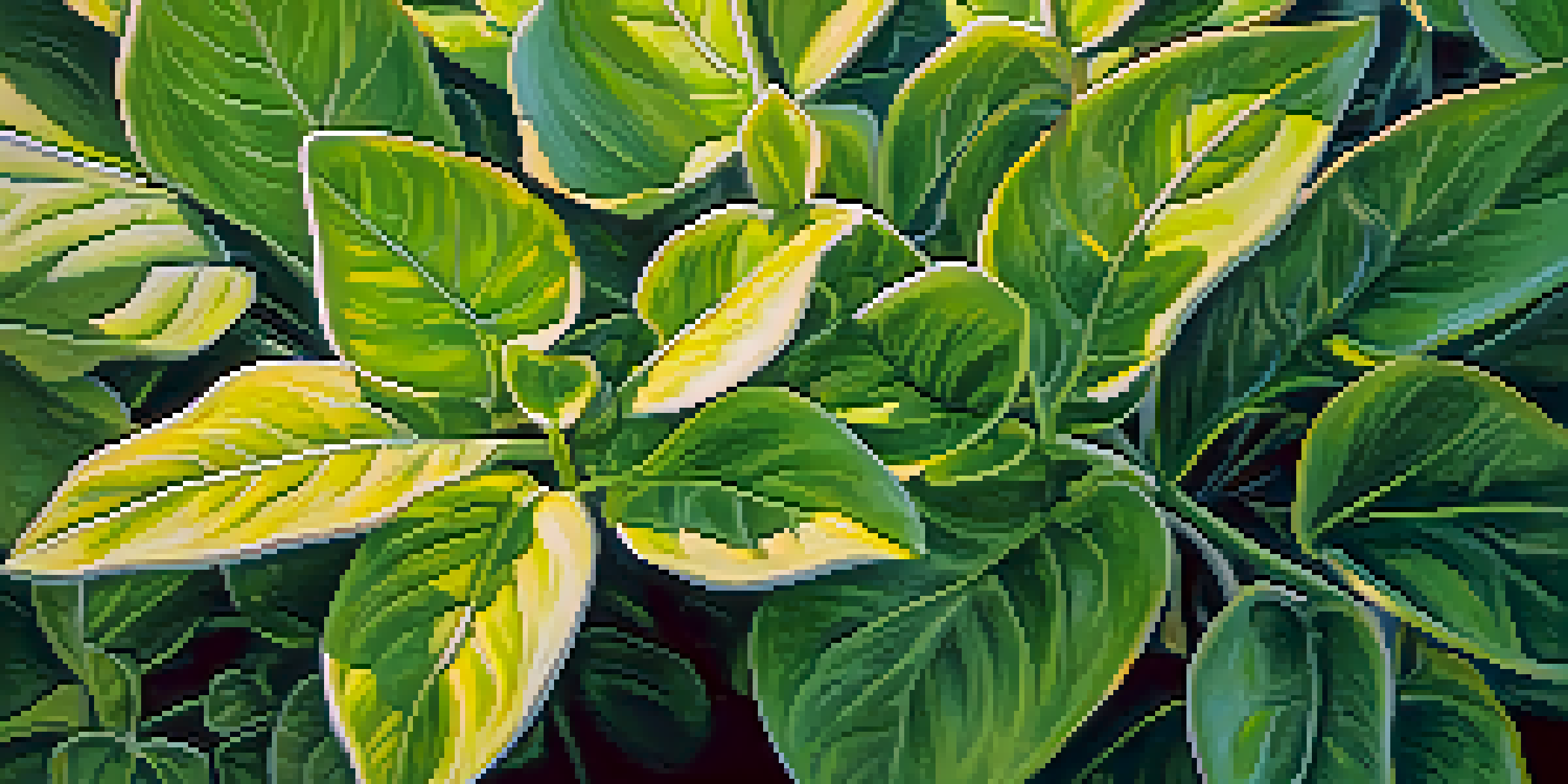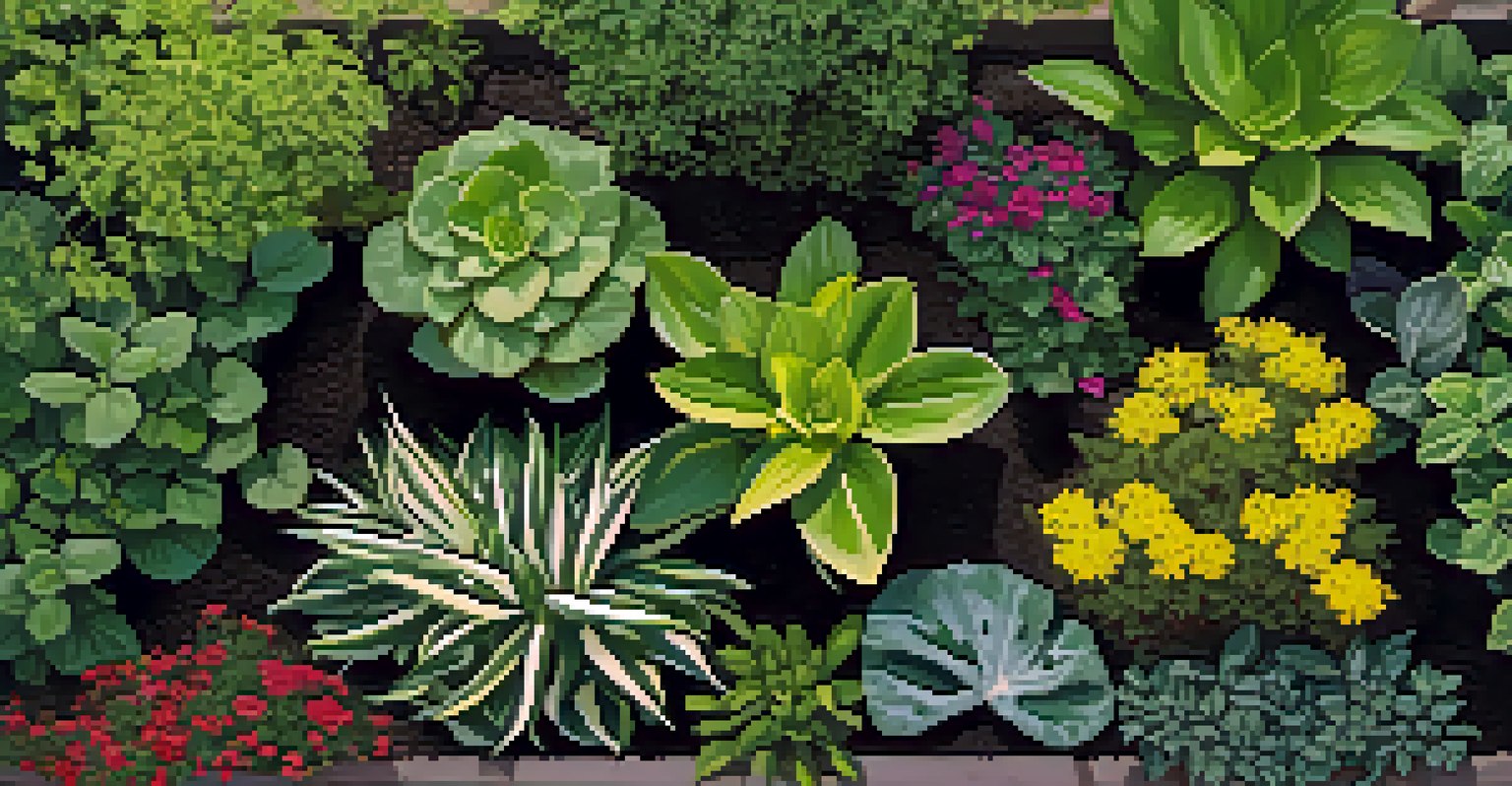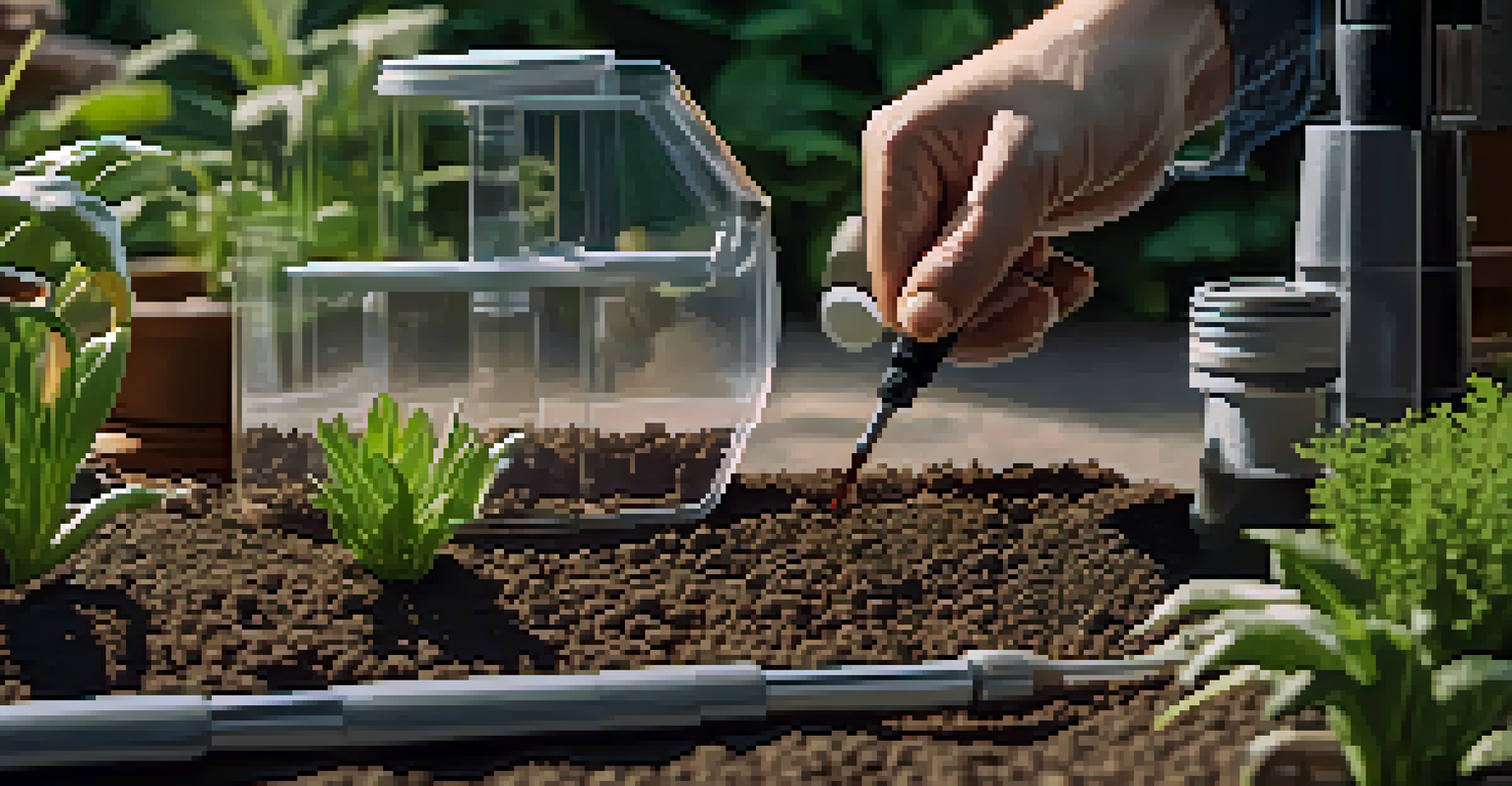Iron Deficiency in Plants: Symptoms and Solutions

Understanding Iron Deficiency in Plants
Iron deficiency in plants is a common issue that can lead to stunted growth and poor yields. This micronutrient plays a vital role in photosynthesis, respiration, and overall plant health. Without adequate iron, plants can't produce chlorophyll effectively, which is essential for converting sunlight into energy.
The health of the soil is the foundation of a thriving garden.
It's important to note that iron deficiency is most common in alkaline soils, where iron becomes less available to plants. Additionally, factors such as poor drainage or root damage can exacerbate this issue. Understanding these conditions can help gardeners take proactive measures to keep their plants healthy.
Recognizing the signs of iron deficiency early can make all the difference in a plant's recovery. By being aware of the symptoms and potential causes, gardeners can implement effective solutions to ensure their plants thrive.
Common Symptoms of Iron Deficiency
The most noticeable symptom of iron deficiency is chlorosis, which is the yellowing of leaves, particularly in younger foliage. As the deficiency progresses, the veins of the leaves may remain green while the spaces between them turn yellow. This striking visual contrast is a clear indicator that something is amiss.

In some cases, affected plants may also exhibit stunted growth or a general decline in vigor. You might notice that your plants are smaller than usual and not producing as many flowers or fruits. This can be frustrating, especially for those who have put in the effort to maintain their gardens.
Iron Deficiency Impacts Growth
Iron deficiency in plants leads to poor growth and yields due to its essential role in photosynthesis and overall health.
Another symptom to watch for is leaf drop, which can occur when the plant is under stress due to nutrient deficiencies. If you start to see leaves falling off prematurely, it's crucial to investigate further to determine if iron deficiency is the root cause.
Causes of Iron Deficiency in Plants
Iron deficiency can arise from various environmental factors, including soil pH and nutrient availability. When soil pH rises above 7.0, iron becomes less soluble and harder for plants to absorb. This is especially common in regions with alkaline soils, where iron deficiency is frequently reported.
Plants are like people; they require the right nutrients to grow and thrive.
Overwatering can also contribute to iron deficiency by damaging plant roots and limiting their ability to uptake nutrients. When roots are deprived of oxygen, their efficiency decreases, resulting in nutrient deficiencies that affect overall plant health. Understanding how watering practices influence nutrient uptake is crucial for gardeners.
Lastly, competition for nutrients from other plants can exacerbate iron deficiency. In densely planted gardens, some plants may outcompete others for nutrient resources, leading to deficiencies in weaker plants. Being mindful of plant spacing and companion planting can help mitigate this issue.
Testing Soil for Iron Levels
To effectively address iron deficiency, it's essential to start with a soil test. This test will help you determine the pH level and the available nutrients in your soil, including iron. Many local agricultural extensions or garden centers offer soil testing services, making it easy to get accurate results.
Once you have your soil test results, you can identify whether the pH is too high and if iron levels are insufficient. This information will guide your next steps in correcting any deficiencies. Remember, testing your soil isn't just a one-time task; it should be done periodically to monitor changes over time.
Common Symptoms to Watch For
Chlorosis, stunted growth, and premature leaf drop are key symptoms indicating possible iron deficiency in plants.
Armed with this data, you can make informed decisions about amendments and treatments that can enhance iron availability in your soil. This proactive approach will help your plants flourish and reduce the risk of future deficiencies.
Amending Soil for Better Iron Absorption
To improve iron availability in your soil, consider adding amendments like sulfur or iron chelates. Sulfur can help lower soil pH, making iron more accessible to plants. This is particularly beneficial in alkaline soils where iron becomes locked away from plant roots.
Iron chelates, such as ferrous sulfate or iron EDTA, can also be effective in providing a direct source of iron to your plants. These compounds help keep iron soluble and available for plant uptake. Applying these amendments according to package instructions can significantly boost your plants' health.
Additionally, incorporating organic matter like compost can enhance overall soil structure and nutrient availability. Healthy soil supports robust plant growth, making it easier for plants to access the nutrients they need, including iron.
Fertilizing Techniques to Prevent Iron Deficiency
Choosing the right fertilizer can make a big difference in preventing iron deficiency. Opt for fertilizers that are specifically formulated to include micronutrients, including iron. These products can provide a balanced nutrient profile that supports healthy plant growth.
Foliar feeding is another effective technique for delivering iron directly to plant leaves. Using a liquid fertilizer with iron can allow for quicker absorption and can provide an immediate boost to plants showing signs of deficiency. Just be sure to follow application guidelines to avoid over-fertilization.
Soil Testing is Essential
Conducting a soil test helps identify pH levels and nutrient availability, guiding gardeners in addressing iron deficiencies.
Regularly rotating your crops and practicing good garden hygiene can also help maintain nutrient levels in the soil. By varying the plants you grow in a specific area, you can reduce the likelihood of nutrient depletion and create a more balanced ecosystem.
Monitoring Plant Health for Future Prevention
Regularly monitoring your plants for early signs of iron deficiency is crucial for maintaining their health. Keep an eye on leaf color and overall vigor, especially after weather changes or significant rainfall. The sooner you catch symptoms, the easier it will be to implement solutions.
Maintaining proper watering practices is another preventive measure. Avoid letting the soil become waterlogged, as this can harm roots and hinder nutrient uptake. A consistent watering schedule can help keep your plants happy and healthy, preventing deficiencies from developing.

Lastly, staying informed about your plants' specific needs and local soil conditions can empower you as a gardener. Engaging with local gardening communities or resources can provide valuable insights and tips to keep your plants thriving and prevent future iron deficiency.